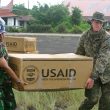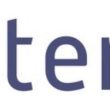The big bang
“This is going to transform public-safety communications the same way that two-way radio did in the 1930s. That’s how big of a change this is going to be.”
Those were the words of an excited Charles Dowd, deputy chief for the New York City Police Department, said shortly after both houses of Congress passed payroll-tax legislation that included the language that public safety has been longing to hear. Congress finally had reallocated the 700 MHz D Block spectrum to public safety and agreed to provide $7 billion in federal funding to help pay for a nationwide LTE network for first responders.
After a long Presidents’ Day weekend, Dowd joined other public-safety officials who had lobbied Congress and the administration so diligently and effectively during the past three years in a celebratory bill-signing ceremony on Tuesday, Feb. 21, that featured all the dignitaries and ingredients needed for such an occasion, except one: a bill for President Barack Obama to sign. However, after the massive bill finally arrived from Capitol Hill the following day, Obama quickly signed it into law.
With his stroke of a pen, Obama simultaneously ushered in a new broadband era for public-safety communications and culminated a series of events that resulted in a highly improbable — and, at times, seemingly impossible — reversal of fortune in the political tug-of-war for the D Block spectrum and network funding.
“Every time they told us we were dead, somehow, we survived,” said Charles Werner, fire chief in Charlottesville, Va.
Indeed, public safety not only survived but thrived in the deal. With the D Block, first responders have 20 MHz of continuous spectrum to use as the foundation for a nationwide LTE network and eventually — after mission-critical voice over LTE becomes a reality — almost 40 MHz of airwaves in the 700/800 MHz band. And, while no one believes $7 billion is enough to build a nationwide network completely, it will provide a much-needed financial jumpstart to a long-awaited broadband initiative.
“Three years ago, folks were telling us we were crazy, this would never happen, it won’t work — all of those things,” Dowd said. “Now, all of those things are out the window. We’re on the precipice of redefining public-safety communications.
“It’s a great thing — absolutely fantastic. I’m just so excited about this outcome.”
Uphill battle
Indeed, public safety’s prospects appeared to be extremely bleak three years ago (see timeline). The original 10 MHz of public-safety broadband spectrum in the 700 MHz band was licensed to the Public Safety Spectrum Trust (PSST), an organization chaired by longtime public-safety advocate Harlin McEwen that had no funding resources. Subsequently, the FCC’s public/private partnership proposal for building the network that would be shared by commercial interests and first responders failed to generate a qualified bid for the D Block — 10 MHz of spectrum adjacent to public safety’s broadband airwaves — during the 700 MHz auction held in 2008.
Frontline Wireless, led by former FCC Chairman Reed Hundt, was expected to bid in that auction, but the company closed its doors just weeks before the auction began. Hundt was critical of the FCC, PSST and public-safety leadership, which he said placed “irrational” demands that made it impossible to make the economics of the network work.
“The D Block was supposed to be the public-safety network or choice, and what happened? The FCC screwed it up so badly that it was the only auction in the history of the FCC that completely failed,” Hundt said in 2008. “Frankly, first responders should have been marching on Washington. People have been put at risk because this didn’t happen.”
Under other circumstances, Hundt’s criticisms of public safety’s leadership might have been dismissed simply as sour grapes from a frustrated entrepreneur, but Hundt became a key technology adviser to newly elected President Obama, which caused concern for public-safety officials. In addition, Democratic lawmakers on Capitol Hill repeatedly expressed disappointment that telecom behemoths AT&T and Verizon secured almost the entire 700 MHz broadband spectrum that was auctioned and cited the need for new wireless competitors.
Meanwhile, public safety had its own internal problems. Dowd and other major-city officials in 2009 challenged the wisdom of having the PSST be the licensee for public safety’s 700 MHz broadband spectrum. With public safety split, most Beltway observers expected the FCC to auction the D Block in late 2010, as the existing law dictated.
This sentiment was reinforced when the FCC released its National Broadband Plan, which called for the D Block to be auctioned to a commercial operator and sought $6.5 billion in federal funding to help pay for a broadband-network buildout for first responders. Throughout the Beltway, public safety was informed that it would not be able to secure both the D Block and funding, and many respected political pundits urged the first-responder organizations to take the funding — an unprecedented financial outlay for public safety from the federal government — if Congress would agree to it.
For the most part, public-safety officials had resolved their differences on the subject and in January 2010 began working together via an ad-hoc coalition that would become the Public Safety Alliance. However, with the FCC planning to auction the D Block, many questioned whether there was any realistic chance to secure that spectrum for first responders.
Most public-safety officials valued the D Block spectrum more than funding, but others noted that most first responders might not get a network at all without significant federal funding. What public safety really wanted was both the D Block spectrum and federal funding — just getting one or the other would not yield the desired results. So, against the political odds, the key first-responder leaders decided to push for both.
“Conventional thinking would say, ‘Look, this is never going to happen,'” Werner said. “It took a real leap of faith for everyone to say, ‘We’re going for it — all or nothing.’
“But I think, at the end of the day, we realized that it wasn’t going to be nothing. At the end of the day, even if they auctioned it, we were going to get something — it wasn’t going to be what we wanted, but it was going to be something.”










